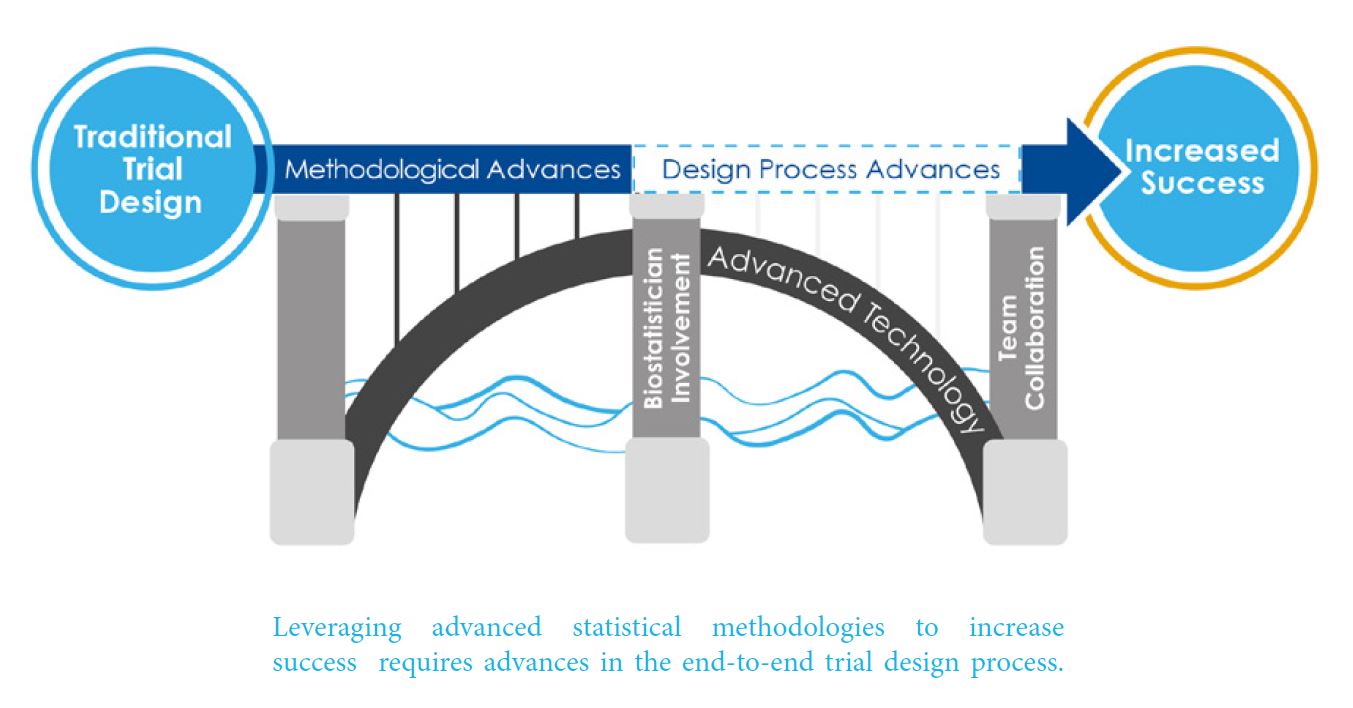5 Questions to Help You Modernize Clinical Development

The rapid pace of technology has opened up numerous avenues for advanced innovative clinical trial design, but how can we use this to propel clinical development goals like maximizing revenue, or ensuring a commercially viable product? When operational constraints are limiting, how do we achieve the best possible trial design? What should we do if a competitor is edging us out of the market?
While we know that the statistical design of clinical trials can shorten trials or set realistic enrollment goals, there is still a growing need to tie these features of trial design directly to commercial revenue. Clinical development teams would ideally know how much they are willing to spend for an incremental gain in statistical power, or the marginal financial gains in waiting a week to unblind data.
The good news is the industry is getting there. Here are 5 Questions to help you begin your journey towards the Re-imagined Clinical Trial:
1: How do you prioritize speed, savings and success?
At first glance this might appear to be an unfair question. Obviously a successful trial that takes forever to complete is undesirable, as is an expensive trial that completes quickly but fails to achieve power.
Yet even if you answer, “All of the above – they all matter,” you will likely discover that some members of the Clinical Development team prioritize one and some another.
“They all matter,” -- but speed matters considerably more when you are dealing with a competitor who happens to be introducing a similar product to market.
“They all matter,” -- but savings matters considerably more if you are a tiny biotech that will not be able to use other clinical portfolio assets to make-up for an unsuccessful clinical trial.
A quantitative decision tool can help teams prospectively agree on weightings of speed, savings and success, to offer each innovative design a particular score. Given a set of innovative clinical trials, development teams can then quickly rank the desirability of various designs by their score.
2: Do you have the resources to design and deploy an innovative clinical trial?
Thanks to advances in clinical trial design software, designing adaptive, Bayesian and other advanced clinical trials are becoming easier. This is an important development as it is highly unlikely that the absolute best clinical study design for your commercial goals is a traditional two arm trial. There are dozens of adaptations to clinical trial designs that can help you achieve shorter, cost-effective, flexible and efficient clinical trials.
What often keeps sponsors from pursuing designs that optimize revenue are concerns over expertise and of resources. Chances are that you have the resources to design and deploy these methods, but might feel unsure of how to justify this to regulators or manage the operational features. Working with a statistical consultant with extensive knowledge of clinical trial management can ensure seamless design and deployment of clinical trials that might appear more complex than they actually are.
3: Have you thoroughly explored your options?
One downside to advances in technology is that clinical development teams have gone from evaluating five or six statistical designs for clinical trials, to evaluating over 100,000 designs. Given the sheer volume of clinical trial designs, it is difficult to know when you have explored enough options to feel confident in your clinical trial development strategy.
There are now new methods to rapidly identify the best clinical trial designs for your needs. These methods are somewhat quantitative, but have been shown to increase clinical development productivity by 10-20%. They are worth exploring if there is a lot riding on the right design.
4: Are you leveraging the full power of cloud computing?
Cloud-computing is becoming the new strategic foundation for modern clinical development. Simulations are more reliable, forecasting is more rigorous, and opportunities abound for organizations willing to harness this new technology. The need for tech-savvy statisticians might be more important for strategic development teams going forward. How are you investing in this trend?
5: Are there opportunities for Pareto improvements in your strategy?
This might seem obvious, and in principle every clinical trial sponsor should know whether there are opportunities for revenue which cost (close to) nothing. Very few sponsors, though, have a way of calculating what they leave on the table in their race to begin a trial. Modeling this can be done with appropriate quantitative consultants exploring the full design space with the right technical tools. Why overlook this simple step to improving the eNPV of a clinical trial?
To learn more about modernizing clinical development, read Cytel’s new whitepaper:


